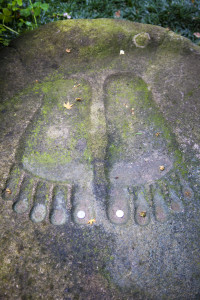Dear Integral Meditators,
This weeks article looks at three domains of our reality that often get confused, and how by cultivating awareness of them we can increase our capacity to respond wisely to the challenges in our life.
Beneath the article there are full details of the “Way of the Enlightened Fool” meditation class on the 11th March. And a final reminder on the course front, the special early bird offer for Meditations for Integrating your Ego, Soul and Spirit on the ends March 6th
Yours n the spirit of wisdom,
Toby
Upcoming Meditation Classes and Workshops at Integral Meditation Asia
Tuesday 11th March, 7.30-8.30pm: Monthly Integral Meditation Class: The Way of the Enlightened Fool
Sunday 16th March, 2.30-6pm: Meditations for Integrating your Ego, Soul and Spirit
Saturday 5th April, 2.30-5.30pm: Meditations for Creating a Mind of Ease, Relaxed Concentration and Positive Intention
 Experiencing, Feeling, Interpreting – Mindfully Processing Our Reality
Experiencing, Feeling, Interpreting – Mindfully Processing Our Reality
When attempting to mindfully process our reality effectively, it can be useful to break it up into three parts:
- What is experienced
- What is felt
- What is interpreted
These are three separate and distinctaspects of any event in our life. If we confuse one or more of them with the other, then this can cause a lot of unnecessary confusion and difficulty.
For example if I am already feeling low about myself and someone mentions in passing that I look tired (this is what I actually experience) then I may interpret that comment as an attack and respond aggressively. The other person may become confused or insulted and I may damage the relationship.
If however I break down and analyze the event down into its three aspects, my capacity to respond appropriately and without confusion is enhanced:
- First in terms of my experience I isolate what has been literally experienced; an innocuous comment about the way I look
- Secondly I am aware of how I feel; I realize that the feeling of low about myself was already there, it was not caused by what they said to me
- Finally as a result of the mindful attention I have paid to steps one and two I interpret the situation effectively, thus not taking insult and over reacting
So, for this week if you would like to work with this, every time you come across a situation that you find challenging or where it is really important that you react/respond well and wisely just ask yourself these three questions:
- What has been experienced in the literal sense of the word?
- How do I feel about what has been experienced?
- How have I interpreted what has happened, and is it appropriate?
Allow these three questions to lead you into a mindful investigation of what is really going on and help you to respond in a wise and thoughtful way.
© Toby Ouvry 2014, you are welcome to use or share this article, but please cite Toby as the source and include reference to his website www.tobyouvry.com
 Integral Meditation Class: The Way of the Enlightened Fool
Integral Meditation Class: The Way of the Enlightened Fool
Date: Tuesday March 11th
Time: 7.30-8.30pm
Location: Gallery Helios, 38 Petain Road, Singapore 208103 (click HERE for map)
In a sentence: A chance for mediators of all levels and backgrounds to come together and meditate in a powerful and supportive environment.
Overview: These Integral Meditation Classes combine meditation training in the five stages of mediation practice and the five types of meditation skills with a particular theme. This month’s class focuses on an exploration of the enlightened fool.
Crazy Wisdom: The Way of the Enlightened Fool
In common language we normally use the term fool in a derogatory manner, in the same way that we might use the term ‘idiot’. However in terms of our growth as a person and a spiritual being the archetype of the fool has profound and important meaning as:An image that we can use to connect to our playful and creative self
- A way of inviting ourselves to take positive risks in our life
- A way of accessing our “crazy wisdom”
- A way of positively accessing and dealing with our fears
- A way of connecting to primal spirit in an unique and particular way
In this class you will be guided by Toby in meditation though a series of imaginative keys to help you gain personal access to your own crazy wisdom and enlightened fool!
Conditions for attendance: As mentioned above, this class is suitable for all levels of practitioner; beginners will feel supported, and more advanced practitioners will find that there is plenty of opportunity to develop, explore and consolidate their meditation.
This class is also available as an MP3 recording for those not able to attend in person.
Cost: $20, you can pay on the day, or make payment online below.
CLICK HERE TO PURCHASE THE MEDITATION CLASS BY PAYPAL
For more information or to register your attendance contact Toby on info@integralmeditationasia.com or sms 65-96750279









